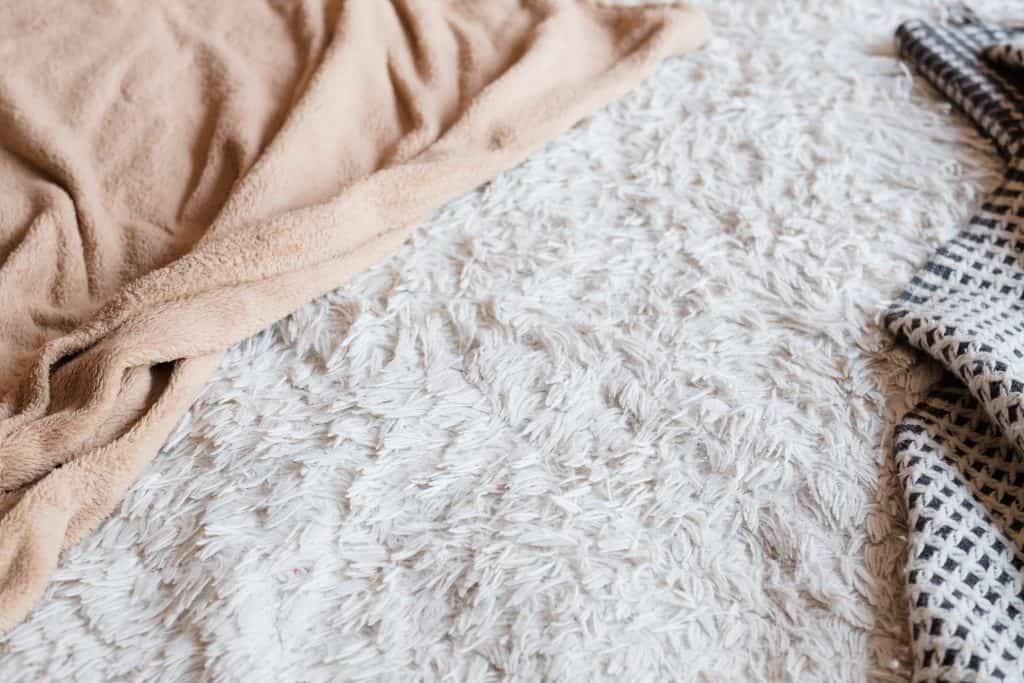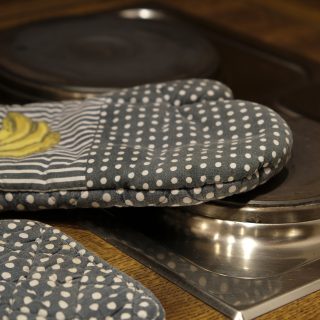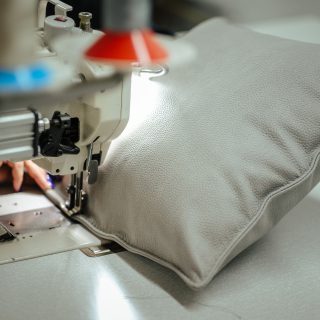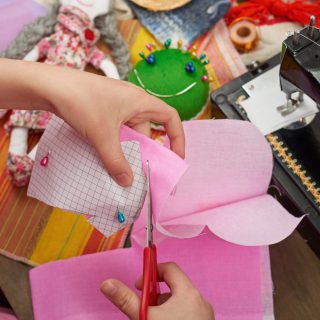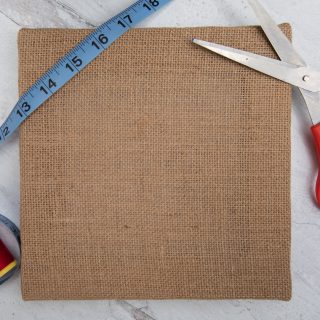A friend of mine has neatly wrapped blankets on the arms of almost every couch in her home. In addition to those, she keeps two in the back of her car, in case of an emergency that could require her sleeping in the car, and one in her camping bag. She says that they provide a higher level of comfort and coziness even just by their inactive presence and that they render her home more homely.
Not only her home, though, since wherever she takes those blankets, they give her a sense of familiarity and even friendliness, and who wouldn’t agree that the blankets are our best friends in our bouts of depression or solitude, when we just want to chill while getting lost before the images emanating from our TV set?
To achieve a similar sort of comfort, coziness, and homeliness, you don’t even have to order a bunch of identical blankets online or go wandering from shop to shop, looking at all the blanket options they have, and muttering to yourself: “No, this doesn’t look like a good friendly blanket – it would certainly talk behind my back. Look at it! It looks just like Chris from senior high! Goddamn Chris, who dumped me because our names were too phonetically similar for his liking.”
Instead of opting for mundanity or being reminded of Chris, you can just start sewing them by yourself and make some friends.
How to Sew a Blanket: A Step-by-Step Guide
Step 1: Choose the Fabric
There should be three layers of fabric on top of each other in your blanket if you want to have an efficient one that will not only give you a sense of coziness but will also keep you warm in the winter: the bottom layer is the batting of your choosing, the midlayer should be flannel, and the upper layer, in other words, the outside of the blanket, is best when it’s plush (although it’s not a must).
For the batting, you can choose from a couple of options: cotton, wool, bamboo, polyester, depending on your budget and how heavy and how warm you want it to be.
For the midlayer, you may pick any flannel you like.
For the plush part, you have to be more careful, because it’s how your blanket is going to look, and it’s the part that will make contact with your skin while you are lying underneath it. Therefore, it’s better to go and purchase it from a physical store if possible, rather than an online one where you’d have difficulty estimating if you’ll get any itches or irritation (either physical or mental) from the touch of the fabric in question.
Before buying any of the fabrics mentioned above, though, it’s better to decide on a size, so you can make your purchases accordingly.
Step 2: Choose the Thread
Whether you are going to sew the blanket by hand or with the help of a sewing machine, you’ll need to choose a matching color to that of the fabrics you have. Regardless of what method of sewing you choose, you’ll need to do some finishing touches with hand embroidery and you’ll need to get embroidery floss for that. It’s better to purchase a pack of embroidery floss that has as many colors as possible. This way, you’ll not only make sure you have plenty of options but also invest for future sewing or embroidery projects.
Step 3: Wash the Fabric
Washing the fabrics you purchased before cutting and sewing them is imperative.
As I explained in the first step, you’ll have three different sorts of fabric in the making of your blanket, all of which have different traits and different tolerances against contact with hot water. If you wash them after you cut them or, even worse, finish sewing them, they might end up shrinking in different sizes, and you’ll have quite a weird blanket in your hands. To prevent that, you have to wash them before cutting them.
Step 4: Cut the Fabric and Lay Them in Order
Having washed them and preemptively shrunk them, now you can lay the three types of fabric on top of each other and cut them into the size you want your blanket to be.
The order of laying them should be as follows: batting at the bottom, flannel with its right side facing up on top of the batting, and the plush with its right side facing the flannel at the top.
Make sure there are no creases in any layer before picking up your scissors. Also secure them in place in each corner with pins so that they don’t move out of position while you are cutting.
After the cutting, you’ll need to straighten the fabric out and secure them with pins once again.
Step 5: Sew the Fabric Together
The fabric is all in order and secured in place with pins, alright, but there is still the possibility that you might not stitch them together all that comfortably because the material you have is quite heavy at the moment. That’s why, after measuring a seam allowance between half an inch and one inch, you need to mark the line of stitching with a water-soluble pen, pencil, or masking tape.
If you are using a sewing machine, the process that follows is quite straightforward: make sure that you are in line with the marking you made and make sure that you know when the corners are coming up and do a curved stitch there or stop the machine and rotate the blanket accordingly.
If you are sewing it by hand, on the other hand (you won’t believe me if I say “no pun intended”, will you?), things might get a bit trickier. Therefore, I recommend you watch tutorials online rather than read about it because directions only in text might confuse you in this step and it would be quite unnecessary when there are all these great videos out there.
Whether you are sewing by hand or with a sewing machine, though, you need to stop stitching six or eight inches before your starting point. You are going to leave a hole there, which you’ll later use to turn the blanket inside out.
Step 6: Finishing Touches
The first finishing touch is cutting off the excess fabric: start cutting the excess fabric quarter an inch away from the seam. If you have any masking tape or sewing pins, you can remove them after cutting the excess off.
The second finishing touch is pressing the seam and the outside of the seam with an iron. Normally, pressing a seam is conducted with a hot iron and lots of steam. Not this time around. With your machine set on low heat, gently press around the edges of the blanket. After you are finished with one side, flip it over and apply the iron on the other side.
Remember the hole you left at the end of the fifth step? That’s our third and last finishing touch. By going in the hole between the flannel and plush, reach to the other side and pull it towards yourself without damaging any of the stitching, so that the batting becomes the midlayer. Once you are done with that, you’ll have to close the hole by hand. By making use of the embroidery floss and the tutorials I linked above, you are going to finish your blanket.
Final Words
Sewing is one of those engagements that immediately let you reap the results of your labor, and you can’t say that about most of the occupations that we pick up for passing our free time more efficiently. There is also a dignified worldliness in the convenience of being able to use what you have produced yourself, and you can’t say that about most of the jobs that we have to work on to sustain ourselves and maintain our free time.
But, I still wonder, now that you have a blanket in your hands sewn by none other than your amazing self, what are you going to do? Immediately crawl under it and binge your favorite show on Netflix? Sew another one for your kids or siblings or parents or friends? Open up a glass of wine and celebrate your success in tipsy pride? Wrap yourself with it and sit on your veranda looking down on your neighbors who could never pull it off? Hang it on a wall and admire it for eternity?
I am genuinely curious about how you would answer these questions and how you felt after creating a blanket all by yourself. If you did create one following my guide, drop me a comment below to talk about how it felt and what you did afterwards! Thank you!
Last update on 2025-07-05 / Affiliate links / Images from Amazon Product Advertising API

